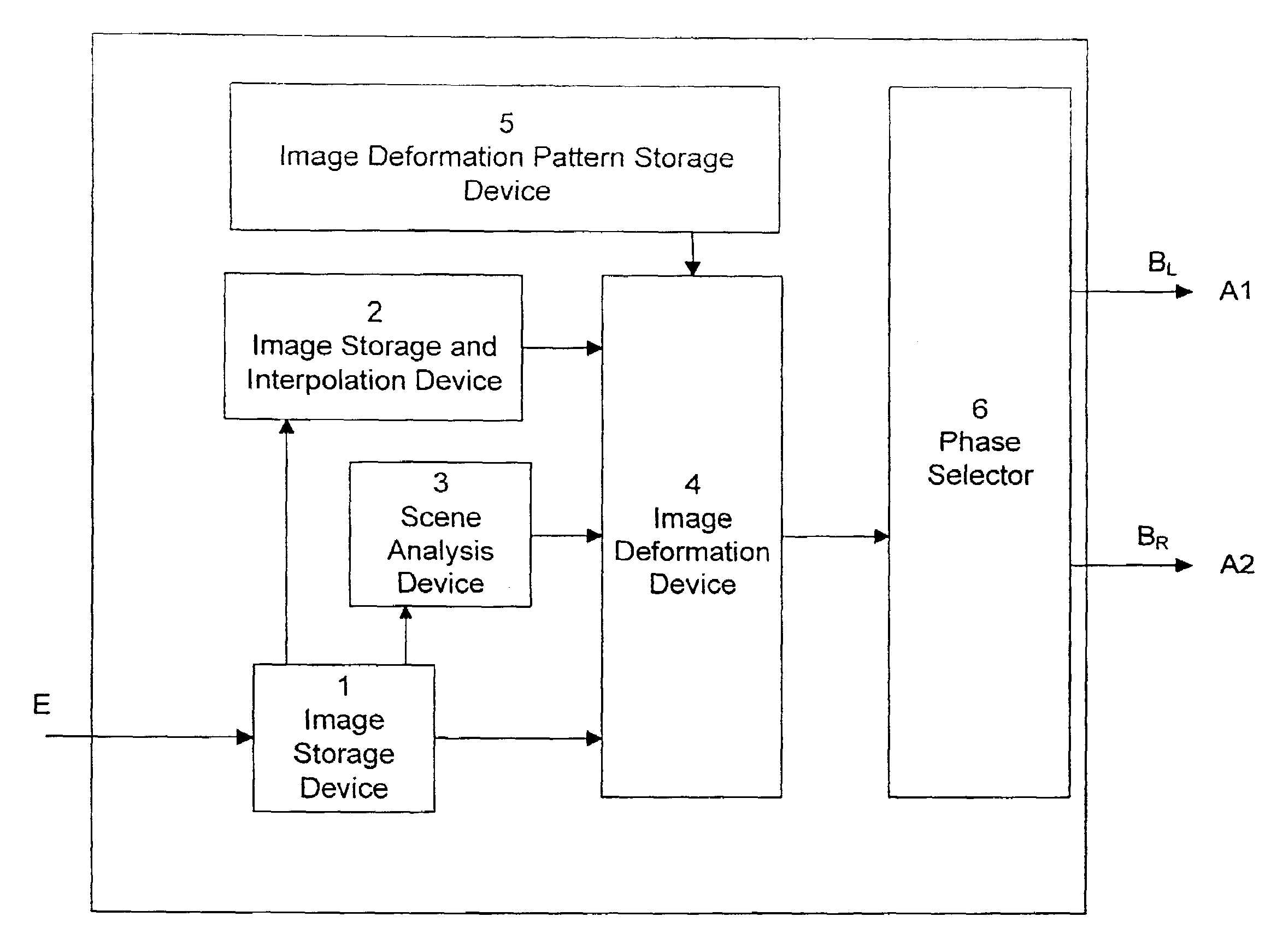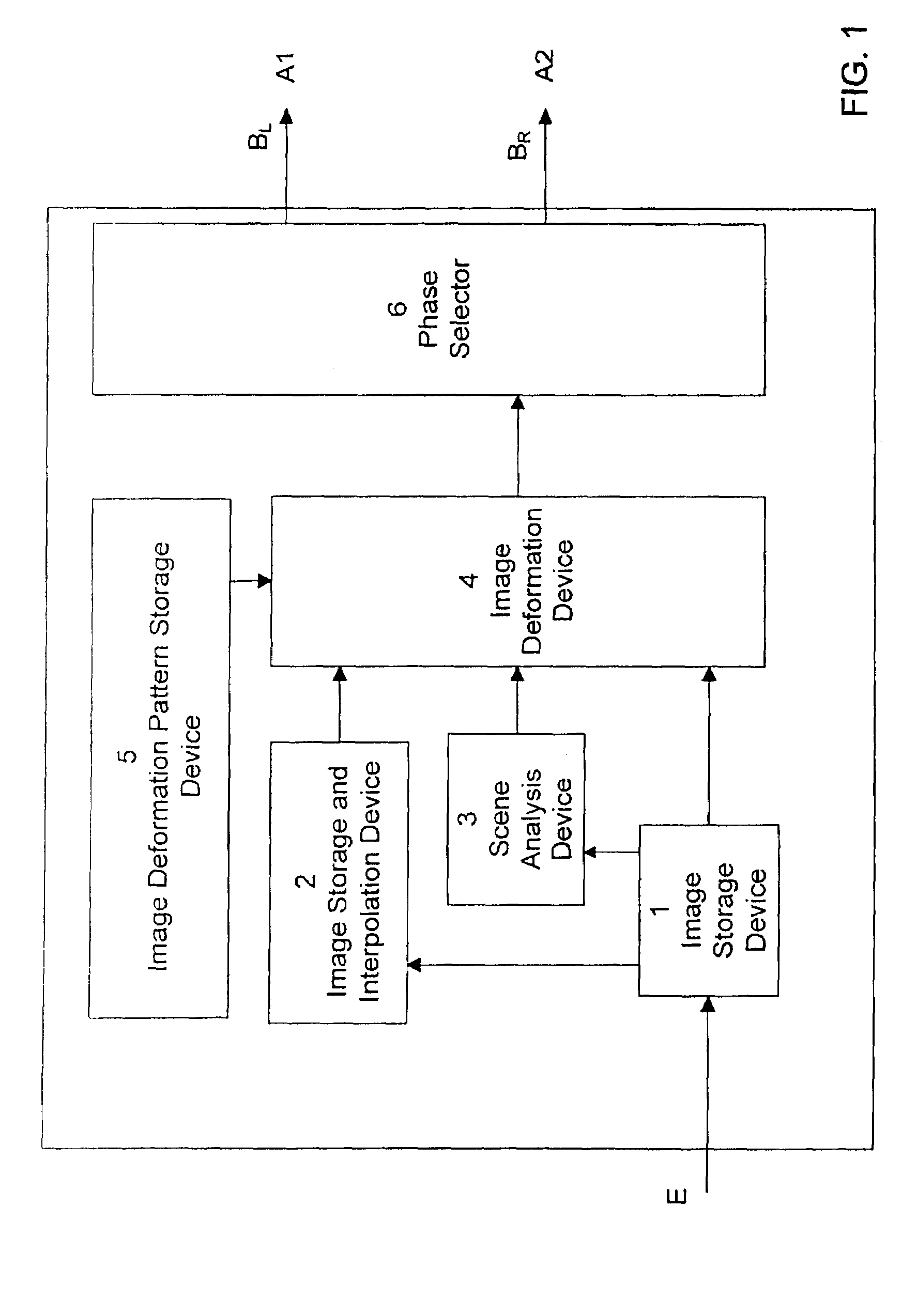Method and device for the generation of 3-D images
a three-dimensional image and image technology, applied in the direction of geometric image transformation, image analysis, instruments, etc., can solve the problems of reducing the refresh rate for each eye to 25, unpleasant flickering for the viewer, and problems such as the inability to synchronize both channels, so as to achieve natural three-dimensional appearance
- Summary
- Abstract
- Description
- Claims
- Application Information
AI Technical Summary
Benefits of technology
Problems solved by technology
Method used
Image
Examples
Embodiment Construction
[0035]The basic components of an apparatus according to the invention and their interconnections are schematically illustrated in FIG. 1. The apparatus shown in FIG. 1 may be implemented in a digital image processing system (not shown) for the generation of 3-D images transmitted or stored in a 2-D format. The apparatus generates the 3-D images from a series of 2-D images. The 2-D images may be recorded by a camera and digitized before they are provided to the apparatus provided by the invention.
Structure of the Illustrated Apparatus
[0036]The apparatus shown in FIG. 1 has a first input E for receiving the 2-D images, which are loaded into a first image storage device 1 for the temporary storage of at least one of each given image.
[0037]The loaded images are transmitted from the first image storage device 1 to a second image storage device 2, which is connected to the first storage device 1 and is equipped to store and interpolate a predetermined number of sequential images.
[0038]In ...
PUM
 Login to View More
Login to View More Abstract
Description
Claims
Application Information
 Login to View More
Login to View More - R&D
- Intellectual Property
- Life Sciences
- Materials
- Tech Scout
- Unparalleled Data Quality
- Higher Quality Content
- 60% Fewer Hallucinations
Browse by: Latest US Patents, China's latest patents, Technical Efficacy Thesaurus, Application Domain, Technology Topic, Popular Technical Reports.
© 2025 PatSnap. All rights reserved.Legal|Privacy policy|Modern Slavery Act Transparency Statement|Sitemap|About US| Contact US: help@patsnap.com



